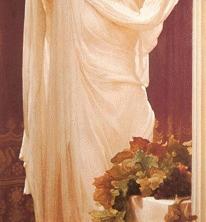
The Cherokee (who call themselves the Tsalagi) originally occupied a large portion of the Alleghany mountains. Their territory covered what is today the states of Virginia, Tennessee, North Carolina, South Carolina, Georgia, and Alabama. They had long-running, highly ritualistic feuds with the Iroquois and other eastern tribes such as the Tuscarora, Catawba, Creeks, and the Shawnee. However, their most tragic war was with the the US government. In 1839, after a long series of conflicts during which they were pushed westward towards the Mississippi, the Cherokees were forcibly evicted from their land and marched to Oklahoma in the dead of winter by the US Army. This is today known as the "Trail of Tears", one of the most shameful actions ever taken by the Unites States government. Many white Americans today claim to trace descent from a Cherokee ancestor (typically a 'Cherokee Princess', which is bizarre because the Cherokee do not have any sort of titular nobility). This has become a running joke for actual Native Americans. Possibly for this reason, the Cherokee tribe has become a focal point for a lot of white guilt. In this context, the spiritual traditions of the Cherokee have in recent years become the subject of several very popular books. The Myths of the Cherokee, excerpted from the 19th Annual Report of the Bureau of American Ethnology, is a nineteenth century collection of Cherokee myths, legends and folklore by the noted anthropologist James Mooney (1861-1921), who lived for several years with the Cherokee. Features of Mooneys' corpus are several stories which (in hindsight) are in X-Files territory, including UFOs, crypto-zoological animals, and powerful crystals. In addition, there are numerous tales of a race of magical beings, the Nûñnë'hï, who sound uncannily like the European fairies or elves, including disguised subterranean dwellings, time slips during visits and magical boons to mortals who are kind to them. There are also several stories which are obviously borrowed from African sources, probably from escaped slaves who took refuge in the Cherokee nation. Many of the myths and legends have sophisticated humor which transcends cultural boundaries. Mooney also debunks some regional southeasteran lore which is attributed to the Cherokee, but which was made up by local authors. Even at this time there was a great deal of spurious material published about Cherokee beliefs, and Mooney attempted to sort out the genuine material from the bogus. The Sacred Formulas of the Cherokee, published in the 7th Annual report, Bureau of American Ethnology, is a summary of the work Mooney did in preserving a set of Cherokee Shaman's notebooks. This text is a look into the shamanistic practices of healers among the Cherokee, including the full text in Cherokee and English of several key rituals. |
Hold the world's wisdom in the palm of your hand. Over 1700 books. |
| On Twitter, follow 'sacredtexts.' |
| Sacred-texts on Facebook |
|
|
 Buy a DVD or USB 1700+ books. Support this site. |





